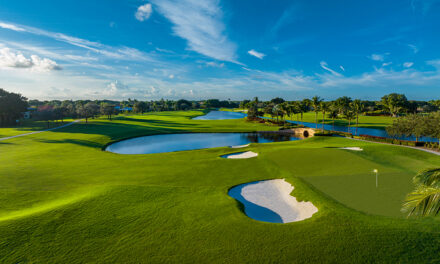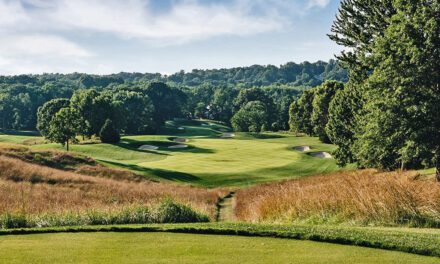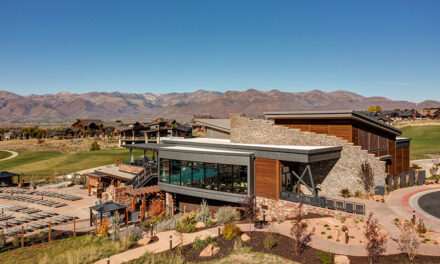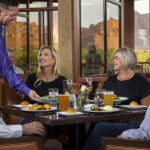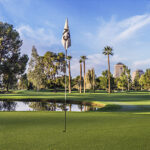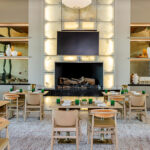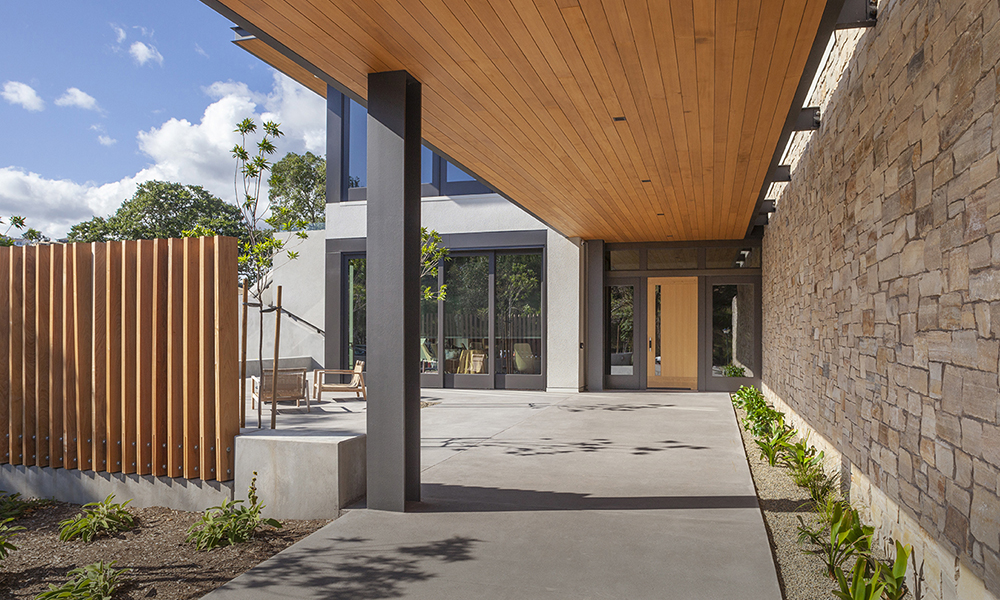
Privé Spotlight
A Fresh Beginning
From the embers of a historic wildfire, California’s Fountaingrove Club is re-invigorated by a new clubhouse.
By Jay Stuller
The views from the expansive dining space in Fountaingrove’s new clubhouse are sublime, indoors and out. Open for less than 18 months, it’s anchored at one end by a colorful bar, backed by a limestone block wall, and fronted by floor-to-ceiling windows and doors that open to a wide, building-long patio. The epitome of “California Casual,” the décor in the Santa Rosa country club’s digs is modern, elegant, and versatile.
The aptly named Summit looks out over a lush green valley, where the 10th and 18th fairways are bifurcated by a waterway flowing to Fountaingrove lake. Beyond, coastal hills loom. And on a morning in late May, a large herd of fluffy sheep are visible below, chewing tall grasses to the nub.
Their labor is meant to prevent a reprise of a roaring wildfire that in October of 2017 burned Fountaingrove’s original clubhouse — and the nearby homes of nearly 40 members — to the ground.
At the time, the Tubbs Fire was the most destructive in California history, torching more than 5,600 structures, causing nearly $1.3 billion in damages, and killing at least 22 people. Finding positive things to say about it is a stretch, perhaps even sacrilege.
“It’s rough when you lose your home and everything you ever had,” acknowledged Fountaingrove board president Marshall Andrew, one of the 40. “But for the club it was a blessing in disguise, a new beginning.”
Deferred Maintainance
Founded in 1983 by the California Teacher’s Union, Fountaingrove opened as a public golf course, and went through several ownership iterations before becoming a member-owned private country club in 2003. But like many clubs in the late ‘tens, Fountaingrove had its share of debt, a slow-drip membership decline, and as Andrew said, “lots of deferred maintenance.”
The old three-story clubhouse was cumbersome and difficult to get around. Its elevator worked about half the time, and there was no air conditioning, making summer dining unbearable.
“The layout was dysfunctional, as if it were for a resort and not a private club,” said former Fountaingrove president Tom Hakel. “If the fire and insurance settlement hadn’t happened, we’d be operating on band-aids.”
While the wildfire fused bunker sand into glass, the course survived, thanks to a member who led a crew with generators and water tanks to hose ashes off greens. The club’s athletic center, pool, and tennis courts were largely unscathed. And immediately after the smoke cleared, the club was thrown open to members and non-members alike, and it became the communal gathering place for a neighborhood that lost some 1,700 homes.
Fountaingrove set up an improvised dive bar that turned into a popular watering hole. An outdoor pizza oven cranked out hot dogs and burgers. “Covid came along, but we made do,” recalled Hakel. “From the golfer’s perspective, it was actually an enjoyable time.”
Ah yes, the golf course. The Ted Robinson design winds for nearly 7,000 yards through hilly terrain studded with oak trees, laurels, and ponds. It is scenic … and can be wickedly difficult. The slopes on the sixth and 16th greens invite four-putts. The downhill par-3 17th looks easy, but tee shots seem drawn into the pond fronting the green. But without question, it’s a quality track.
Designed by Numbers
Nonetheless, membership numbers fell to a low of 222 golfers. Salvation meant using the insurance settlement for a knock-out clubhouse that could reinvigorate the club.
“We had focus groups, town halls, and member surveys, which guided what a new clubhouse should look like,” explained Andrew. “The number one request was to take advantage of the view to the west. The second was a for a California casual look, instead of the formal interiors of traditional clubs. Third was for plentiful outdoor seating.”
With a budget of about $20 million, the club hired BAR Architects & Interiors out of San Francisco, a venerable firm with a strong understanding of Bay Area architectural history and traditions. The architects, who clearly honored the membership’s wish list, chose to place the new, 22,100-square-foot building on the footprint of the old clubhouse, yet with only two stories.
The ground floor includes handsome locker rooms, offices, meeting areas, and a well outfitted golf shop. The steel support posts and window and door frames give the building a modern look, while the texture of limestone blocks evokes nature, as do oak-plank ceilings. And the new elevator and air conditioning are a welcome addition.
Since the new clubhouse opened, Fountaingrove hit its golf membership ceiling of 368, a number determined by tee time use. It also has more than 700 lifestyle members, who have unlimited use of the pool, athletic center, tennis courts, and the clubhouse, which can make Summit a busy place.
While cleared of starting the Tubbs fire, the Pacific Gas & Electric Company’s power lines did ignite even larger and more deadly wildfires in subsequent years. As part of a complex $13.5 billion bankruptcy plan, the utility accepted liability for Tubbs. Fountaingrove’s eight-figure share of the settlement, larger than expected, put the club in good stead for future capital projects.
Most pressing is a new golf course irrigation system, and an athletic center expansion is planned. The board intends to move cautiously on other improvements, even as the club is still learning how to best arrange Summit’s barstools and chairs.
With no other restaurants nearby, Summit’s deck and dining area are packed on weekends. Because the furnishings are light and moveable, the club has the flexibility to host a raucous gathering or put a date night couple in a quiet corner. And then there’s the deck, where one can almost hear the sheep diligently working to limit damage should fire ever return.


